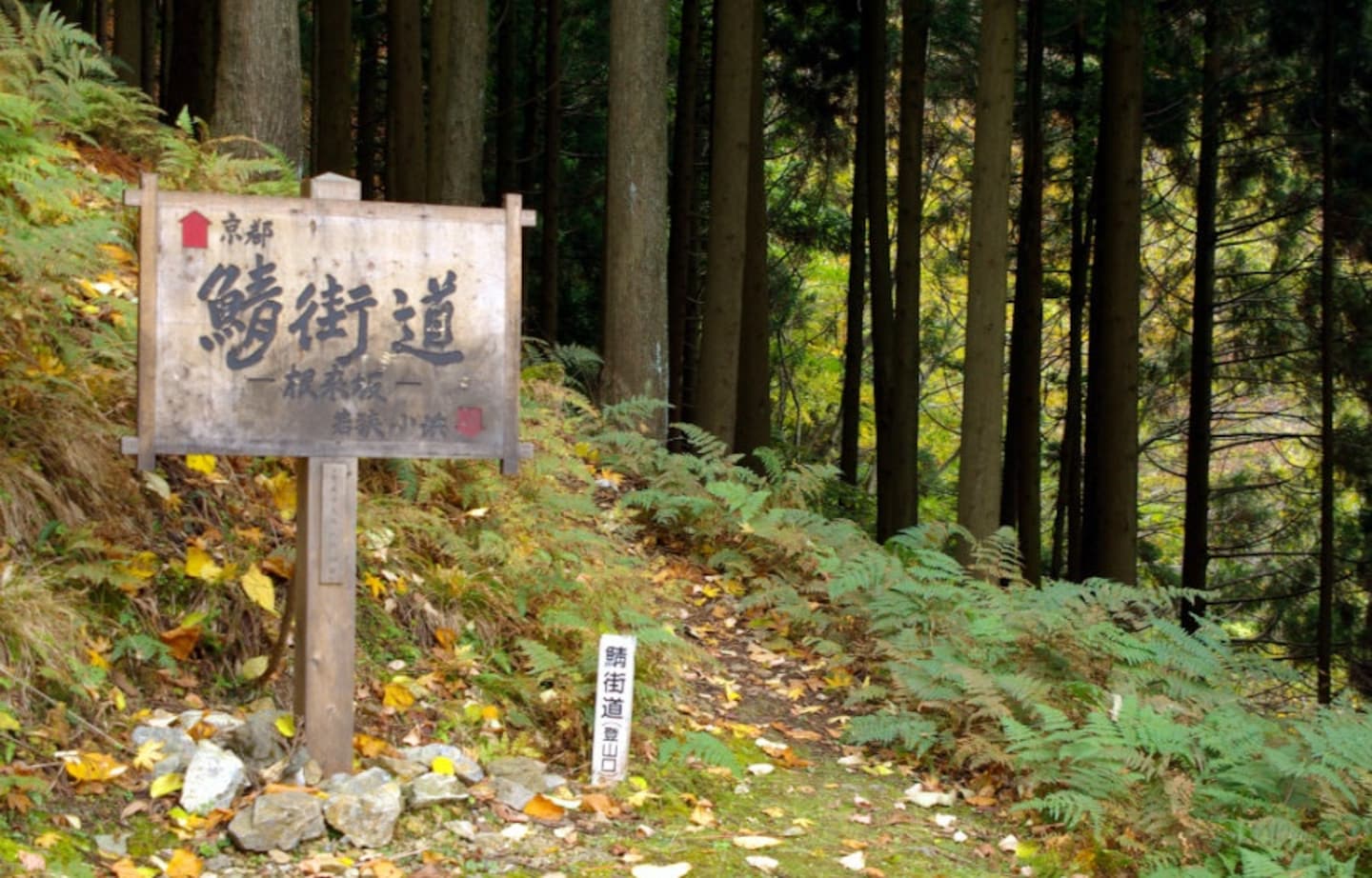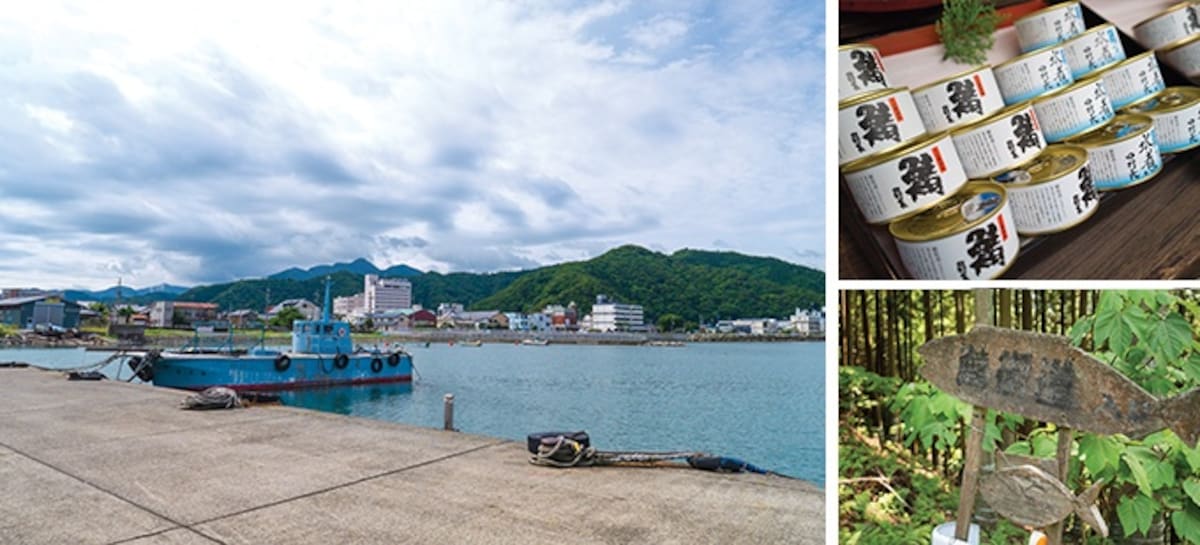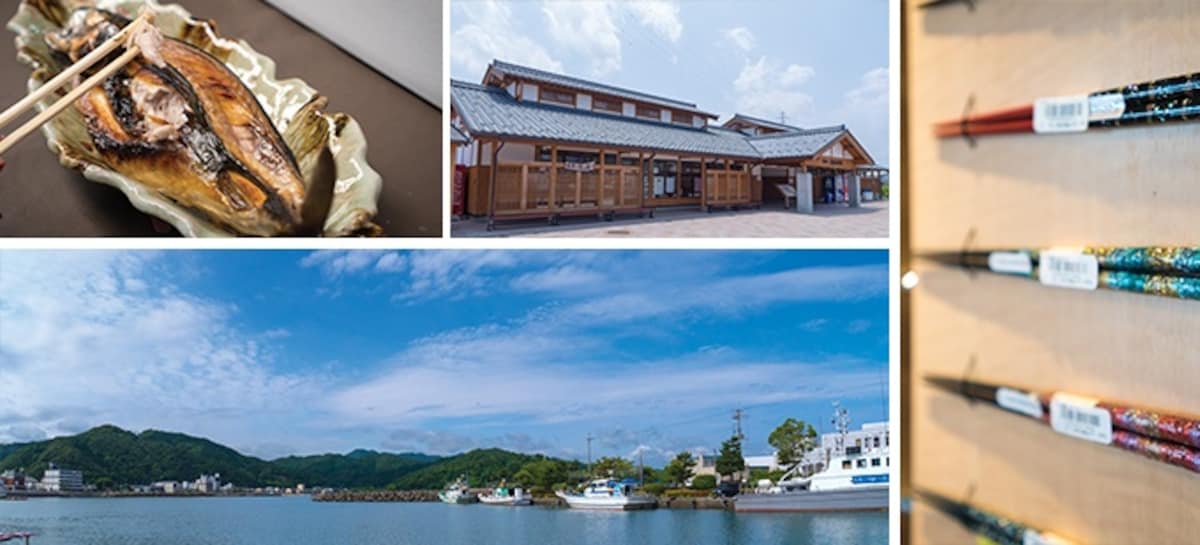Hike the Mackerel Highway

The history of Saba Kaido (which literally translates to “Mackerel Highway”) stretches back at least thirteen centuries to the Nara Period (710-794). The city of Obama, meaning Little Beach, is in Fukui Prefecture, situated on wide, sheltered Wakasa Bay—a rich natural port on a calm sea filled with ocean life.
By Highlighting Japan
http://www.gov-online.go.jp/eng/publicity/book/hlj/html/201507/201507_13_en.html
In the days before modern transportation, food had to be carried by hand or by horse, so inland capitals such as Kyoto or Nara did not have easy access to fresh goods, particularly those taken from the sea.
The nearest port on the open sea, Obama was the hub of the supply route to the interior of the country. There were actually several routes available between Obama and Kyoto, and the route taken depended on the cargo. Large and unwieldy cargo that did not spoil so quickly, such as rice, was taken a little farther inland by horse and then floated down the length of Lake Biwa. Fresh food like mackerel, however, had a short shelf life, and had to be delivered via the most direct route possible: Mackerel Highway, eighteen ri (about 72 kilometers/45 miles) through the backcountry in a nearly straight line between Obama and Kyoto.
Upon arrival in Kyoto, the mackerel would have reached its optimal state, the salt soaking in just right. One popular dish was saba-zushi: sushi rice pressed together with a fillet of salted mackerel above and sometimes topped with a thin piece of pickled kelp. This dish was especially favored at religious festivals such as the Gion Matsuri and the Aoi Matsuri (giving a new meaning to the old expression “holy mackerel”).
https://www.youtube.com/watch?v=C4ksIU3Tq7Y&feature=youtu.be
Wakasa mackerel and saba-zushi can still be found in Kyoto’s markets, and of course in Obama as well, along with a whole host of other mackerel dishes suited to the modern age. An especial recommendation of Obama’s denizens is yaki-saba—whole mackerel skewered and grilled and served simply with soy sauce and ginger.
Takashi Masuda, the 12th-generation proprietor of Kutsukiya, one of Obama’s most popular purveyors of yaki-saba, explains that the fish is slashed a few times and grilled on one side for about 10 to 15 minutes, letting all the excess fat drip out, before turning it to retain the delicious oils that lead to a moist, juicy, ever-so-slightly sweet product. As one satisfied customer remarks, “Even if you don’t like fish, this will change your mind.” Masuda’s yaki-saba is so popular that it often sells out before noon.
Near Kutsukiya, visitors can find a museum documenting the history of Mackerel Highway, as well as Tamuracho, a shop that that specializes in processed mackerel products, including excellent canned mackerel.
According to Katsuhiro Ishibashi from the Obama City Sightseeing Division, while mackerel may have a smelly or less-than-stellar reputation in other places, it’s not so in Obama. “The saba here has the real flavor. If you try saba prepared in Obama just once, you won’t be able eat any other saba again,” he claims.
https://www.youtube.com/watch?v=AUw4Snn0QZQ&feature=youtu.be
Hiking aficionados will be happy to know that it is still possible to walk Mackerel Highway, in whole or in part. If you’d like a guided tour, Chosho Sugitani and other guides host “Saba Kaido Walking” once every year in early May. The Golden Week holiday running from the end of April to early May is the perfect time to do the trek, with budding broad-leaved trees creating a veritable shower of green.
The two-day walk stops at a mountain cottage at the halfway point where trekkers can rest up for the next leg of the trip (breakfast included). Sugitani says the trail is imbued with history even beyond mackerel; in 1570, shogun-to-be Tokugawa Ieyasu reportedly traveled this road to return to Kyoto after a battle.
Visitors can also undertake the walk without a guide—and those who prefer to sleep rough can camp along the trail. There is one camping ground at the halfway mark, in Kyoto’s Kuta district, suited for that purpose. For an even more authentic experience, walkers might also want to try carrying 40-kilogram (88 lbs) packs to closely replicate the journey of the mackerel porters.
Those not traveling on foot may want to stop at Kumagawa Post Town, a way station on one of the more indirect, but well-traveled, routes of Mackerel Highway. A charming post town around since 1589, Kumagawa was a bustling transit point between Obama and Kyoto during the Edo Period (1603-1868). Once home to over 200 buildings and having handled up to 1,000 horses and oxen at a time, the town now consists of about 100 historic buildings and retains its Edo Period charm. A long, handsome road lined with old-fashioned shops and cafés is flanked by the Maegawa Canal, which adds the pleasant sound of rushing water to a leisurely stroll down the street.
While in the area, visitors may want to have a look at Wakasa nuri-bashi, or lacquered chopsticks. The city of Obama holds about 80 percent of the country’s market share in lacquered chopsticks, which are such an integral part of washoku (traditional Japanese food culture), which was recently added to the UNESCO Intangible Cultural Heritage list. The chopsticks, each pair taking a few months to make, are covered in many layers of lacquer and incorporate organic materials, such as bits of mother-of-pearl and other shells from the adjacent ocean, inlaid under some of the coats. The top layers of the lacquer are then strategically filed off to expose those underneath, unleashing glints of color and radiance.
There are 27 nuri-bashi associations in the Wakasa area. “Hashi no Furusato Kan Wakasa” (the Wakasa Chopsticks Exhibition Pavilion) has samples from each, and displays over 3,000 pairs of locally made chopsticks, including the largest chopsticks in the world according to the Guinness Book of World Records. The pavilion also offers a chopsticks-filing experience, allowing visitors to make and take home their handiwork, inlaid with Wakasa seashells.
Now it is possible to travel between Kyoto and Obama in around two hours. But to visit Mackerel Highway and even walk a stretch of it is to gain insight into the culture and history of this region of Japan, and to get a sense of the development of this beautiful land—as well as the trade, culture and hard work behind it.




